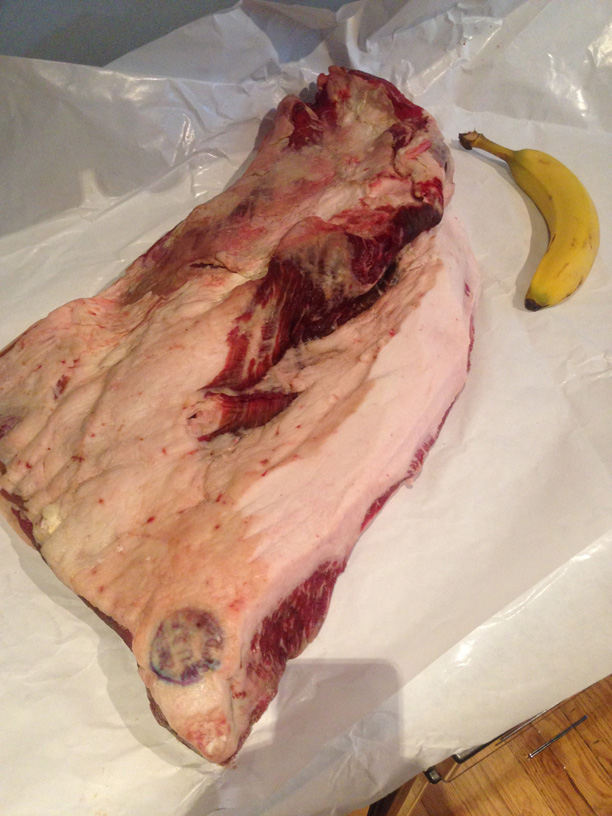mikerooooose
Knows what a fatty is.
Hello everyone!
This is my first post — although I'm a long-time lurker.
Here is Chicago we have an awesome butcher shop that gets some awesome beef from a place called Lapryor Farms (http://lapryorfarms.com). The farmer chooses not to get their meat graded/labeled, but it's easily prime. The fat is very soft and starts to render off at room temps. Any cut taste 100x better than anything I've picked up from any local grocery chain.
I wanted to see if anyone else is doing pasture raised briskets. These are grass fed, but it looks like they also feed corn before they go to market. I noticed this style of beef cooks a lot differently than your normal packer brisket.
First, there is no stall, at all. It just cruises through from 160-180 without hanging. Second, because there is no stall it cooks very fast, I would say around 45-60 minutes a pound @ 250.
My last cook was very good, although some parts of the flat were pretty dry and tough. I had to chop them up with some fat for sandwich meat. It was a 12lb brisket that I trimmed down to about 10lb — maybe I took too much fat off?
I've read that lowering the temps is required for cooking lean grass fed meat and will try that next. I think I was up to 275 at one point, and I've heard you are suppose to do 50 degrees less. My next cook I'll probably do it at 210-225 and try to move it away from the fire more (I'm cooking on a Big Green Egg so that's always the hard part).
I've also read that you're not suppose to go as high in temperature with lean/grass fed meat and I took this last brisket to ~203. The point and the meat right in the middle between the flat and point were great, but like I said the flat suffered from it.
Does anyone else have any experience with this kind of meat, and have any other recommendations? I've heard some people use a Jaccard, some marinate or inject. I haven't gotten into any of that yet.
Thanks!
Mike

This is my first post — although I'm a long-time lurker.
Here is Chicago we have an awesome butcher shop that gets some awesome beef from a place called Lapryor Farms (http://lapryorfarms.com). The farmer chooses not to get their meat graded/labeled, but it's easily prime. The fat is very soft and starts to render off at room temps. Any cut taste 100x better than anything I've picked up from any local grocery chain.
I wanted to see if anyone else is doing pasture raised briskets. These are grass fed, but it looks like they also feed corn before they go to market. I noticed this style of beef cooks a lot differently than your normal packer brisket.
First, there is no stall, at all. It just cruises through from 160-180 without hanging. Second, because there is no stall it cooks very fast, I would say around 45-60 minutes a pound @ 250.
My last cook was very good, although some parts of the flat were pretty dry and tough. I had to chop them up with some fat for sandwich meat. It was a 12lb brisket that I trimmed down to about 10lb — maybe I took too much fat off?
I've read that lowering the temps is required for cooking lean grass fed meat and will try that next. I think I was up to 275 at one point, and I've heard you are suppose to do 50 degrees less. My next cook I'll probably do it at 210-225 and try to move it away from the fire more (I'm cooking on a Big Green Egg so that's always the hard part).
I've also read that you're not suppose to go as high in temperature with lean/grass fed meat and I took this last brisket to ~203. The point and the meat right in the middle between the flat and point were great, but like I said the flat suffered from it.
Does anyone else have any experience with this kind of meat, and have any other recommendations? I've heard some people use a Jaccard, some marinate or inject. I haven't gotten into any of that yet.
Thanks!
Mike


